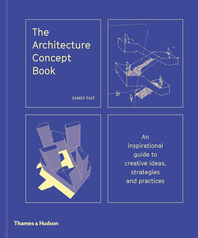Lerner: What do you mean when you say "We must dare to be boring"?
Whitaker: That’s a terrific question. I think if Frederick Law Olmsted showed up with a Central Park that was one large, big, dumb rectangle, we would probably have hooted him out of the room for lack of imagination. When you look at some of the great urban design solutions in history, they’re very, very simple. Boring in this sense means simple. You know, I think of the Copa Cabana in Brazil, in Rio, which is one large sweep of beach. Once you drew that arc on a piece of paper, you could go straight to 3 inches equals one foot, in terms of looking at the paving details. You didn’t need that 40-inch scale drawing in between. You know, when [architecture writer] Siegfried Gideon looked at the plan for Rockefeller Center, he said that there was no change to the streetscape. He didn’t see the little three-block long street. William Jordy, who was a distinguished architectural history professor at Brown, actually thought that the three-block-long street weakened the plan. If you look at Rockefeller Center on a map, you can hardly pick out the memorial, the plaza. It isn’t—quote—"interesting"—unquote.
Lerner: So what should the context of the memorial be?
Whitaker: I think it should be buildings that are shaped in height and scale to the size of the plot. I go back to one of things that’s one of my most favorite buildings ever, and not because it’s particularly beautiful, but it’s the Ospedale degli Innocenti in Florence that was done by Brunelleschi. It’s on a piazza that’s north of the Duomo, and of course his eternal fame is the dome, but he was commissioned to do this building in, I think it was 1419. And he began to grapple for the first time that the height of the building he was going to be producing was, in many ways, a function of the size of the plaza. It was the first time anyone had put this equation together: the bigger the plaza, the higher the buildings are going to have to be to frame it. Part of the reason Gramercy Park is such a joy, in my judgement, is the relatively modest scale of the buildings around it. That means we can’t be thinking only programmatically about the memorial, and programmatically about the structures around it, but how big those structures out to be. Now, if you can meet the nut for the Port Authority, in terms of the retail and commercial space, you’re going to be given, politically, a relatively free hand to shape those other buildings, which, from the Port Authority’s perspective, are simply gravy. In other words, whatever rent they can get out of them is a freebie.
We have to throw in a third element, and that’s the hotel, but a hotel is eminently shapeable. Look at the shape of the Marriott that was there. It was kind of an irregular thing that was filling in the space between the two towers out on West Street. I also think that’s a history lesson we can use. I thought it was making a problem for ourselves when we all went out with a grand dispatch to study Hiroshima, and Oklahoma City, and Maya Lin’s work in Washington, D.C. At Hiroshima, the whole city was leveled, so the question of the size of the thing had very little to do with the eventual solution, which was a park. In Oklahoma City, you have a low-density area, where the thing could be conceivably very big. In New York, you’re in a high-density, built environment. The shaping of the walls, and the size of the walls compared to the memorial is something we ought to be grappling with. I’ve always been terribly depressed, discouraged, every time I go to see Independence Hall in Philadelphia. It was set by the National Park Service in this enormous greensward. That was not the context that Ben Franklin and Thomas Jefferson had when they were there. What I’m saying is that we’re often able to create or save the picture in this country, but we are not very good at saving the frame around it. And in the case of the memorial, the size of the frame is going to dictate what the memorial is like. If I gave you a frame that’s ten feet across, you’re going to paint a different picture than if I gave you one that’s 18 inches across.
That discussion would be a constructive precursor to what I think is going to be the ultimate answer, which is some kind of international competition to design the memorial itself. Charlie Gwathmey asked me, "what about the two footprints?" I think that will lead us to what will be a very sad answer, a dreary answer. And we’ll all look back for who to blame, and it really isn’t very satisfying. I think that in shaping the context, we’ll help the person who is going to put together the monument itself. And we can do that now. We don’t have to wait until we’re having a competition for the memorial; we’re discussing the frame around it. How big it is.
Lerner: What do you put in those buildings?
Whitaker: You can put a lot of things in there. You can put some of the housing in there. I think this is another important point, so I’m glad you asked that. I think whatever you have as the program today is going to change. And change is a big issue in urban design. I’m sitting right now in my office, and I’m looking at the floor, and there are staples in the wooden floor that are still there from when a felt hat company was here before. My office is in SoHo. Who would know that this building would be turned into residences and artists’ lofts. Who knew that office buildings in lower Manhattan became see-throughs that would be turned into residential development. I think what you have to deal with at this juncture is less program, and more shape. I tell my own students, let’s put the program aside. We did a plan for Hoboken that got approved, a waterfront park plan. I spent a lot of time telling my class not to worry about what’s out there. What you want is life and activity. Front doors on the waterfront; that’s the important thing. Deciding right now whether it’s going to be this mix or this or that seems to be an exercise in futility. I’m much more worried around the memorial about how you get front doors to face the memorial. You don’t want to have a parcel and find out the geek has put the front door around the corner on Fulton Street or something, and you’re collecting the trash from the service entrance on the memorial. You have to think through these things.
I’ll give you one more component that needs to be studied and pulled out of the mix. Now that doesn’t mean that you don’t have some grand idea behind it. I certainly would, if I were this, have the idea of putting the streets through, have the idea of plotting the rights of way, making the paper streets now, making sure that as many sites as possible were simply holes where a developer could come in, make a judgement, and decide to build. The only things I would be worrying about are making him put his front door facing the memorial, which means facing the street, making his back door face away—meaning there’s no truck loading, there’s no entrances to parking garages. The bus station itself is a whole component that needs to be looked at. We’re not going to have the buses sliding into some underground garage and have that ramp cheek by jowl with the memorial itself. That’s one of the things that made Liberty and West Streets so depressing in the World Trade Center Era: there were four entrances to underground garages there. It kinda wrecked the scale of the thing.
We’ve completely forgotten the fact—you know, I think Alex Garvin [a Yale professor of urban design who is the lead urban planner for the LMDC] did a good job for taking the lead and getting beaten up for fighting the fact that Greenwich Street was going to be put through. Silverstein wanted to build a big building that straddled Greenwich Street, like the old Seven World Trade. And Garvin put Greenwich Street though. But now, that little triangle of park, which would be a wonderful addition to a part of the city with almost no parks, has become a ramp to an underground garage.



















